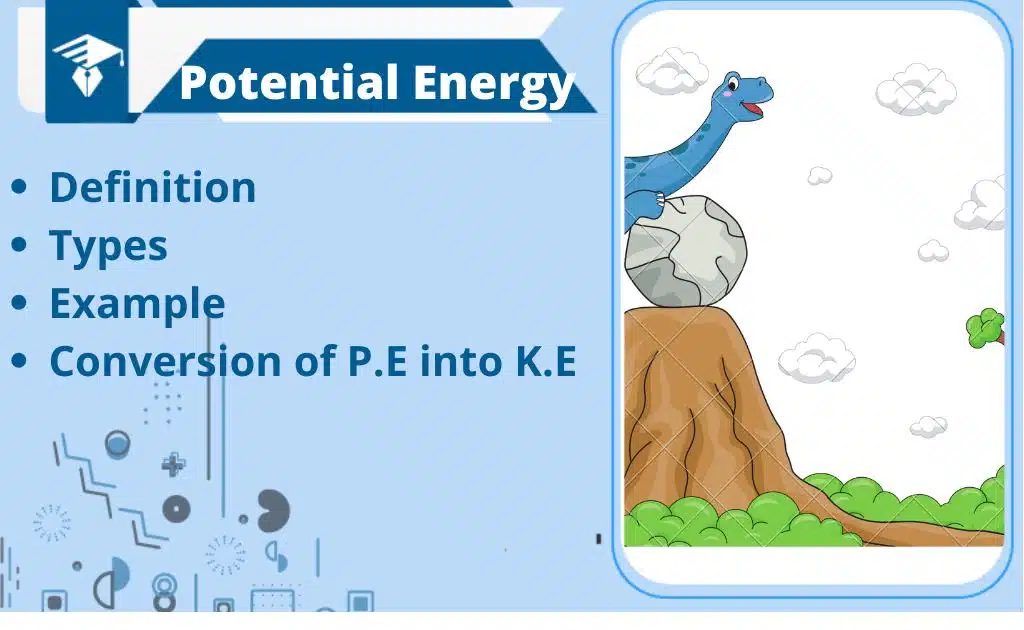Mechanical Energy-Definition, Examples, And Conservation
Mechanical energy is the sum of kinetic energy and potential energy. If an isolated system is subject to conservative forces, then the mechanical energy is always constant.
What is Mechanical Energy?
The mechanical energy of a system is the sum of the potential energy, which is measured by the position of the parts of the system, and the energy of motion, which is also called the energy of motion.
M.E=K.E+P.E
The potential energy, or energy stored in a system by reason of the position of its parts, is mechanical energy. One lacking dissipative forces, such as air resistance, or one in which such forces can be neglected are examples of systems that have mechanical energy constant.
In the vertical position, the swinging pendulum has its greatest and least potential energy, in which its speed is the greatest and its height the lowest; in the swing position, it has the greatest and least potential energy, in which its velocity is the lowest.
The energy is moving between the two forms when the pendulum is moving. The sum of the energy of the pendulum, or its mechanical energy, is constant because of the lack of Friction at the pivot and air resistance. The mechanical energy of the system is diminished at the end of each swing by the tiny amount of energy transferred out of the system by the work done by the pendulum in opposition to the forces of air resistance.
The Earth-Moon system’s mechanical energy is almost constant as it is rhythmically interchanged between its potential and kinetic forms. The Moon’s speed is the least when it is farthest from the Earth. Its potential energy is the greatest, and its kinetic energy has become the least. When the Moon is close to Earth, some potential energy is converted to energy.
Examples of Mechanical Energy
We’re going to look at some examples of mechanical energy. A demolition machine is a great example of both potential and mechanical energy. When raised to a vertical position above the ground, the wrecking ball has potential mechanical energy.
The ball is able to do work because it is in a vertical position. Work is accomplished when a force moves an object. The force to move the ball once it’s released can be provided by gravity. The wrecking ball has the ability to do work due to its movement, as it contains kinetic mechanical energy. The building will move if there is contact between the ball and the building. It will fall down as soon as possible.
Conservation of Mechanical energy
If the system is free of friction and other non-conservative forces, the mechanical energy of the isolated system will remain constant. The principle of conservation of mechanical energy can be used to estimate the effects of non-conservative forces on the system in a real situation. It’s not possible to create or destroy energy in an isolated system, but it is possible to convert it to another form of energy.







Leave a Reply